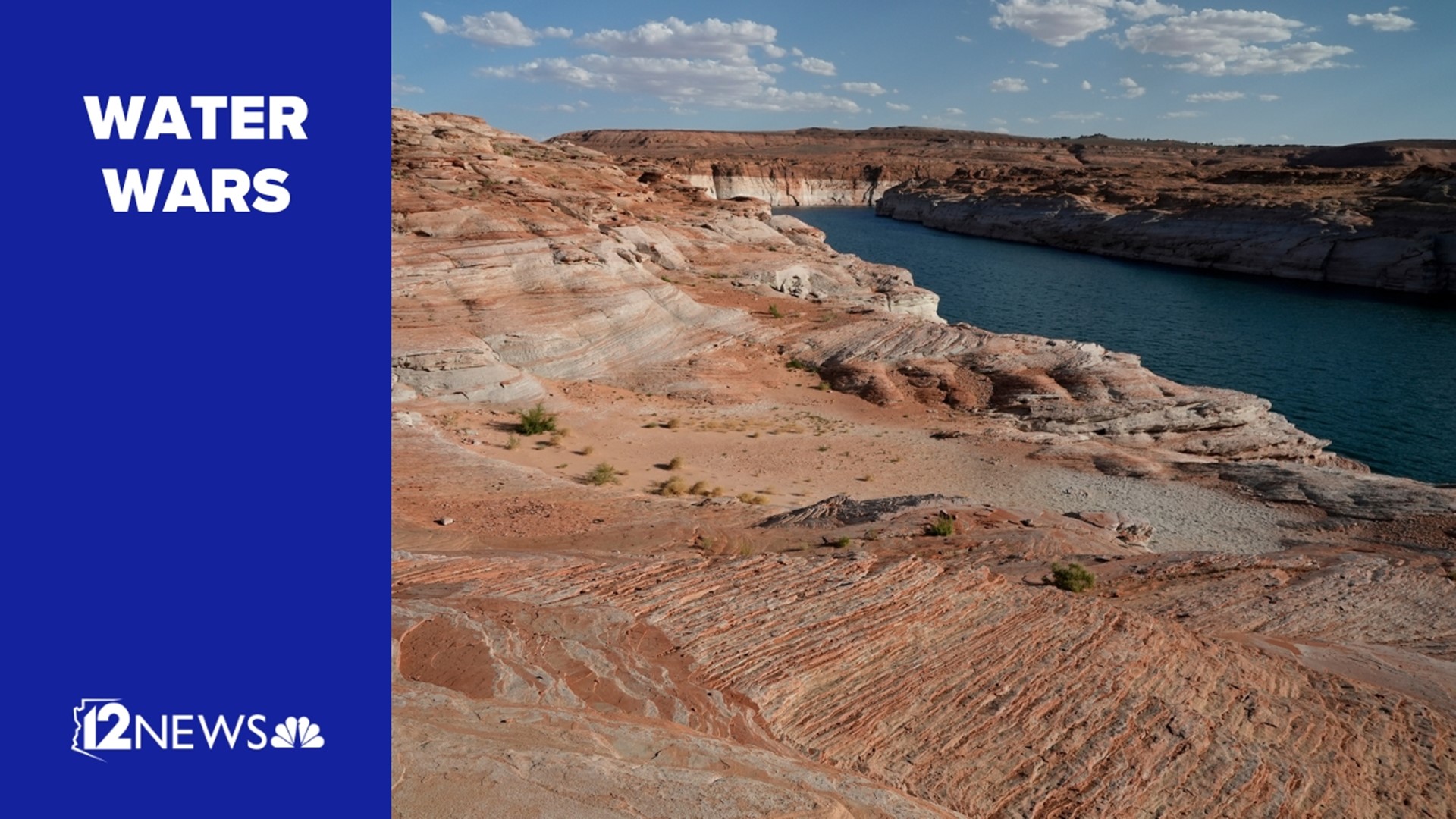PHOENIX — This month will be a moment of truth for Arizona cities.
The Federal Bureau of Reclamation is scheduled to release its “24-month study” that announces how much water Lake Powell and Lake Mead will release in 2023.
Meanwhile, seven western states must also present a plan to dramatically cut 2-4 million acre-feet of water. According to federal records, that amounts to as much as 25% of water allocated to the states.
“That is a huge amount of water,” said Drew Swieczkowski, Water Resource Manager for the City of Glendale. Swieczkowski said he expects the cutbacks will result in Valley cities getting about half as much Colorado River water next year.
“We can do it, definitely. It just takes moving water around and using more resources,” Swieczkowski said. “But I think all the cities are saying, ‘Yeah, we can still supply water. It doesn’t mean your taps are going to run dry.'”
Cities rely heavily on the Colorado River
Cities receive water from the Colorado River via Central Arizona Project (CAP) canals.
Last year, 45% of Glendale’s water consumption consisted of Colorado River water.
The river also accounted for:
- 65% of water in Scottsdale
- 53% of water in Peoria
- 40% of water in Phoenix
- 29% of water in Gilbert
“Peoria has known this was coming for a few years,” said Cape Powers, Water Services Director for Peoria. “We’re very confident in the preparations made and citizens should know there’s no immediate threat to the water supply in the City of Peoria.”
Stricter conservation measures are likely coming
>> Live, local, breaking. Download the 12News app
For now, most Valley cities are implementing Stage 1 conservation measures, which rely on homeowners to voluntarily conserve 5% of water. The declaration also calls on the city to implement conservation measures and communicate to residents.
“It states the situation is serious, people should be paying attention and the city is paying attention,” Powers said.
City leaders appear reluctant to push for harsher restrictions that call for fines, at least for now.
“We’re hoping that everybody realizes the severity of the issue and tries to conserve in their home and mostly outside, where most of the water is used, typically 70% of water,” Swieczkowski said.
But stricter conservation measures appear to be only a matter of time. The west is in a 23-year drought that is worsened by climate change, according to scientists. According to the Scottsdale Progress, Scottsdale Mayor David Ortega says his city could go to Stage 2 or 3 conservation measures as soon as next month.
Higher conservation stages generally mean a higher likelihood that water users could face code violations if they don’t conserve.
According to the Progress, Ortega anticipates Scottsdale could reduce its Colorado River water consumption by as much as 30%.
In a statement to 12News, Scottsdale Water Public Information Officer Valerie Schneider said the city is waiting for the Bureau of Reclamation’s study to be released this month.
“We anticipate deeper reductions in 2023, to what extent is unclear at this time,” Schneider said.
12News asked Swieczkowski why he believes CAP water could be reduced by as much as 50%.
“Everything that we have heard from both ADWR and CAP indicates that if we need a 2 million AF reduction, that we will lose between 45% and 50% of our CAP supply. However, we will not know until after August 15th the exact amount of Colorado River water we will need to give up,” Swieczkowski said.
Cities relying on backup water reserves
As CAP water is restricted, cities will rely on long-term storage credits and underground reserves.
“We will continue to adapt and adjust as things change,” Powers said.
Glendale has water stored underground and behind Roosevelt Dam. It is also drilling two new wells.
The city is also considering financial incentives for homeowners who purchase high-efficiency appliances and replace grass with artificial turf or desert landscaping.
Up to Speed
Catch up on the latest news and stories on the 12News YouTube channel. Subscribe today.

